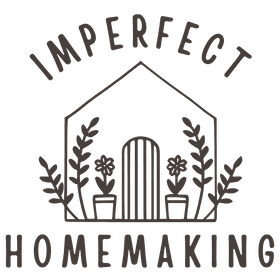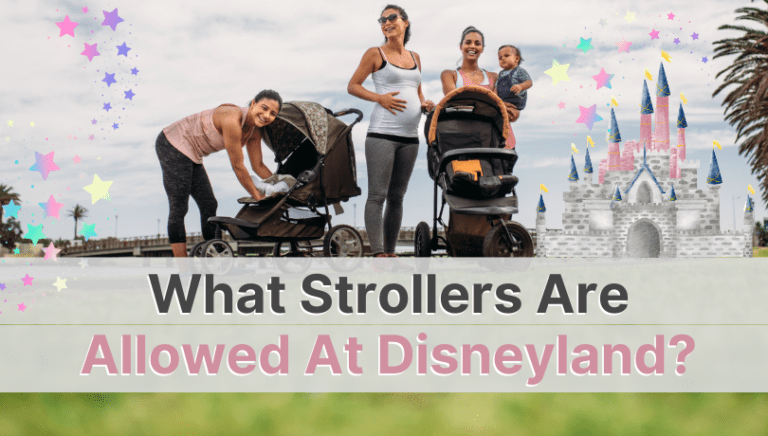Baby Crib Safety Standards: 5 Reliable Crib Safety Tips
Hey, moms and dads (or expecting moms and dads!), you must have heard your family or friends give you dozens of crib recommendations, which can confuse anyone. Shopping for a crib is never an easy task because from crib features to the budget, everything has to fall in place.
And when I mean everything, I even include checking for crib safety standards before you purchase your crib.
The crib will be your newborn’s home for at least the first two years, so you have to pick a crib that’s safe and offers features like mattress heights, sturdiness, and more.
I’m Kelleigh (if you don’t know already), a mother to 6 beautiful kids, and I’ve bought cribs multiple times over the years.
In this guide, I’ll cover why crib safety should be your top concern, along with several safety factors and standards you should never miss out on when browsing for a crib for your kiddo.
Table of Contents

What Makes Crib Safety Essential
Crib safety is something you should ensure to protect your little munchkin from the risk of SIDS, suffocation, choking, and falling hazards.
As your baby grows, they start exploring small movements. They’ll try their best to crawl and roll back into every nook, especially in the crib, which can hurt them.
I faced the same situation with all my kids, especially my son, Aiden, who never shied away from showing his adorable moves in and out of the crib. One of my friends shared her experience as well:
“My 4-month-old daughter learned how to roll from her back to her tummy, so we took it as a sign to move her to crib from bassinet. But one day, when I laid her down in her crib, she somehow managed to roll onto her stomach and get her legs stuck in the crib bars.”
- You can’t stop your cutie from practicing their movements in a crib. But you can make sure the crib you get is backed by various crib safety standards.
- Moreover, never use second-hand cribs, especially if it’s manufactured before 2014. This is because the federal government added new safety standards back then, including banning drop-side cribs. I know some of us hold emotions about older things, but nothing is more important than your kiddo’s safety. Right?
Crib Safety Standards: Important Government Regulations
Once you list cribs that fall under your aesthetic, space, budget, and design, ensure they fall under these crib safety standards.

Let me share some measure certifications to look out for when browsing your kiddo’s cribs.
1. CPSC
Consumer Product Safety Commission (CPSC) regulates the durability and structural safety of cribs to ensure your little one has a safe sleeping space without any safety risks.
2. ASTM
American Society For Testing And Materials (ASTM) ensures that the crib you purchase has structural integrity, sufficient warning labels, instruction manuals, and other design mandates that avoid risks like entanglement, etc.
It also offers performance and safety standards for crib mattresses.
3. JPMA
The Juvenile Products Manufacturers Association tests cribs so that they meet crib safety standards. They also test multiple other baby products to check if they meet the necessary standards.
So, if a crib has been backed by JPMA and has their seal, then you’re all set.
4. Greenguard Gold Certification
Even though this certification is optional, purchasing a crib with the Greenguard Gold Certification can make things even more relaxing.
It means the crib has been tested for over 1000+ harmful chemicals, especially VOCs.
Experts Guide To Crib Safety
Now that you know what certifications to look for while purchasing a crib to ensure your baby stays safe, let me give you my essential safety checklist which I made use of while purchasing a crib.

1. Mattress Fit and Crib Size
I highly suggest you purchase a mattress with a crib to avoid loose-fitted mattresses. Loose-fitting mattresses can be dangerous for your baby since they can cause injury or entanglement.
If you’re purchasing a full-sized, A.K.A. standard crib, it gets easier to find mattresses and bedding that fit in snugly.
2. Safe Sleep Practices
Having a safe crib won’t work until you practice safety measures yourself. Always put your baby on your back when you put them in a crib.
To avoid suffocation hazards, refrain from using stuffed animals, pillows, excessive or loose bedding, and bumpers.
3. Crib Maintenance And Inspections
Make a habit of inspecting the crib at least once a week to ensure it doesn’t have any loose screws, sharp nooks, unstable structure, or splinters of paint or wood that often happen once your little one starts teething and tries to chew on the crib.
4. Three Crib Levels
Once your baby starts sitting, crawling, and standing, you need to lower the crib mattress height to ensure they can’t get out of the crib while showing off their tiny moves.
Pick a crib that offers three crib levels to lower it as your child becomes more active and moves around.
5. Crib Slats and No Fancy Cutouts
Ensure the crib you choose has this maximum distance between slats: 2 3/8 inches (6 cm), to prevent your baby from getting the mattress out once he or she gains mobility.
Moreover, ensure the crib you choose has no unnecessary cutouts, especially on the headboard and footboard, as your baby can get stuck in them.
FAQs on Crib Safety Standards
1. Where Is The Safest Place To Put A Crib?
Always put the crib two feet away from windows, doors, furniture, and walls. This can help you reduce the risk of accidental injuries for your child.
2. Are Crib Mobiles Safe?
AAP strictly advises against hanging strings, which can be a choking hazard for your baby, especially if your child can sit and stand.
3. What Cribs Are Banned?
The US banned drop-side cribs in 2011. These cribs have one side that can slide up and down to pick your baby up more easily.
But it came to light that they pose several safety hazards for your little one, including suffocation and entanglement. So, never accept second-hand drop-sides from anyone.
Bottom Line on Crib Safety Standards
Crib safety should always be your top priority.
I know picking a crib that meets all safety standards can be tiring, but with the help of this guide, I hope you can ease things for yourself.
Always ensure your selected crib follows JPMA, ASTM, CPSC, and Greenguard Gold Certification safety guidelines.
You are welcome to use my safety checklist guide to double-check the crib’s safety while you browse, to provide your baby with a safe sleep environment.




![When to Flip a Baby Mattress? [A Complete Guide]](https://www.imperfecthomemaking.com/wp-content/uploads/2024/02/when-to-flip-a-baby-mattress-768x432.png)

